
persian-license-plate-recognition
PLPR utilizes YOLOv5 and custom models for high-accuracy Persian license plate recognition, featuring real-time processing and an intuitive interface in an open-source framework.
Stars: 345
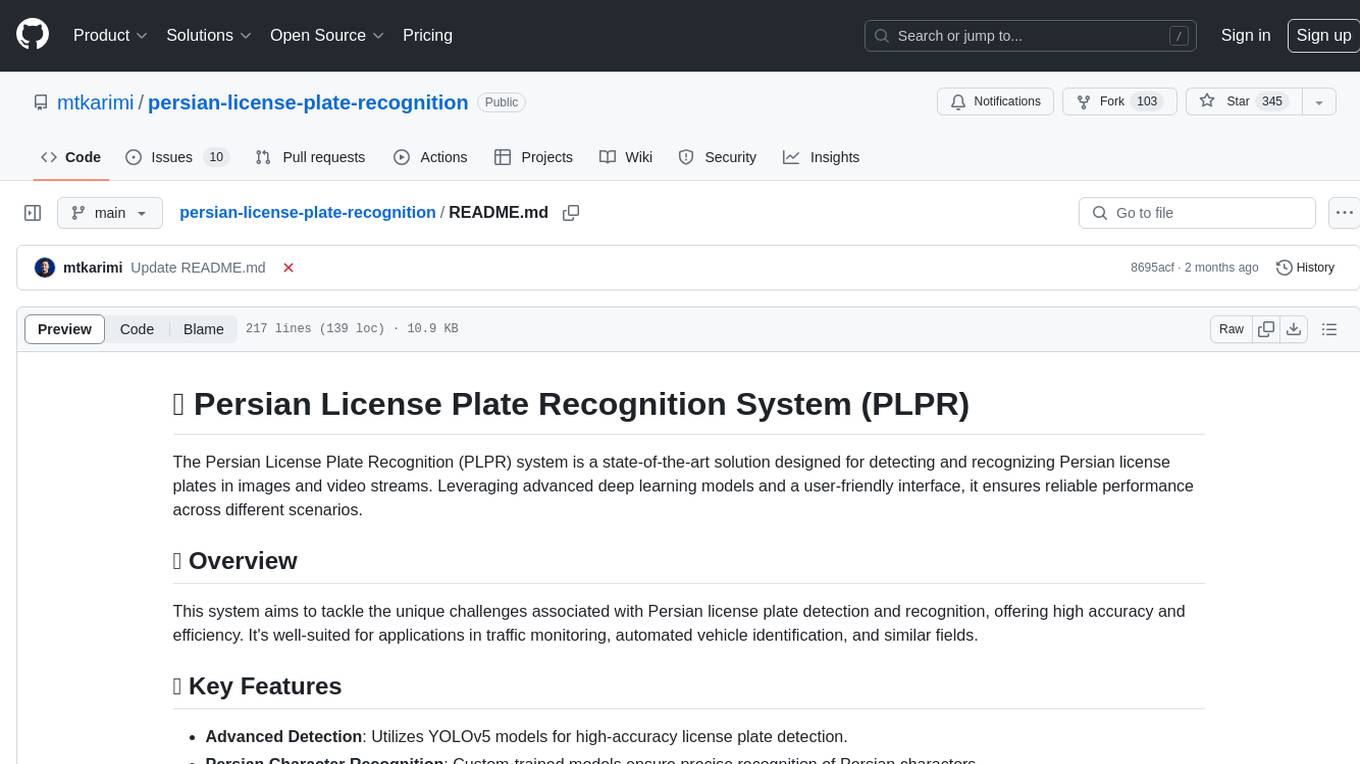
The Persian License Plate Recognition (PLPR) system is a state-of-the-art solution designed for detecting and recognizing Persian license plates in images and video streams. Leveraging advanced deep learning models and a user-friendly interface, it ensures reliable performance across different scenarios. The system offers advanced detection using YOLOv5 models, precise recognition of Persian characters, real-time processing capabilities, and a user-friendly GUI. It is well-suited for applications in traffic monitoring, automated vehicle identification, and similar fields. The system's architecture includes modules for resident management, entrance management, and a detailed flowchart explaining the process from system initialization to displaying results in the GUI. Hardware requirements include an Intel Core i5 processor, 8 GB RAM, a dedicated GPU with at least 4 GB VRAM, and an SSD with 20 GB of free space. The system can be installed by cloning the repository and installing required Python packages. Users can customize the video source for processing and run the application to upload and process images or video streams. The system's GUI allows for parameter adjustments to optimize performance, and the Wiki provides in-depth information on the system's architecture and model training.
README:
The Persian License Plate Recognition (PLPR) system is a state-of-the-art solution designed for detecting and recognizing Persian license plates in images and video streams. Leveraging advanced deep learning models and a user-friendly interface, it ensures reliable performance across different scenarios.
This system aims to tackle the unique challenges associated with Persian license plate detection and recognition, offering high accuracy and efficiency. It's well-suited for applications in traffic monitoring, automated vehicle identification, and similar fields.
- Advanced Detection: Utilizes YOLOv5 models for high-accuracy license plate detection.
- Persian Character Recognition: Custom-trained models ensure precise recognition of Persian characters.
- Real-Time Processing: Capable of processing live video feeds in real-time.
- User-Friendly GUI: Intuitive graphical user interface simplifies interactions with the system.
To ensure optimal performance of the Persian License Plate Recognition System (PLPR), the following hardware specifications are recommended:
- Processor: Intel Core i5 (8th Gen) or equivalent/higher.
- Memory: 8 GB RAM or more.
- Graphics: Dedicated GPU (NVIDIA GTX 1060 or equivalent) with at least 4 GB VRAM for efficient real-time processing and deep learning model computations.
- Storage: SSD with at least 20 GB of free space for software, models, and datasets.
- Operating System: Compatible with Windows 10/11, Linux (Ubuntu 18.04 or later), and macOS (10.14 Mojave or later).
These specifications are designed to handle the computational demands of advanced deep learning models, real-time video processing, and high-volume data management integral to the PLPR system. Adjustments may be necessary based on specific deployment scenarios and performance expectations.
- Clone the repository and navigate to its directory:
git clone https://github.com/mtkarimi/smart-resident-guard.git cd smart-resident-guard - Install the required Python packages:
pip install -r requirements.txt
To customize the video source for processing, modify the parameter in cv2.VideoCapture(0), where 0 denotes the default webcam input. For using a specific video file, change this parameter to params.video, which fetches the video path from config.ini. In config.ini, set the video parameter to your video file path, e.g., video = anpr_video.mp4, replacing anpr_video.mp4 with the path to your video file.
For streaming video sources, update the config.ini file with the stream address. Replace the existing video path with your stream address, for example, rtps = rtsp://172.17.0.1:8554/webCamStream. This adjustment allows the system to process video streams in real-time.
This flexibility in video source selection enables seamless integration and testing across various input methods, ensuring adaptability to different operational requirements.
Launch the application with the following command:
python home-yolo.pyThe system's GUI enables users to upload and process images or video streams, displaying detected license plates and recognized text. It also allows for parameter adjustments to optimize performance.
For a deep dive into the PLPR system's architecture, model training, and advanced usage, check out our Wiki. It's a comprehensive resource for users and developers alike.
Explore the pdf-research directory for research papers and articles on LPR technologies, offering insights into the techniques and algorithms behind the system.
Heartfelt thanks to the open-source projects and communities that have made this project possible. Special mentions include:
- YOLOv5 and PyTorch for the core detection and recognition models.
- PySide6 and OpenCV for the application interface and image processing capabilities.
- Pillow for enhanced image manipulation.
This project stands on the shoulders of giants within the AI and open-source communities. Their dedication to sharing knowledge and tools has been invaluable.
GPL-3.0. See the LICENSE file for details. It means you can:
- Share Source Code: If you distribute binaries or modified versions, you must make the source code available under GPL-3.
- License: Must keep and apply GPL-3 to the modified work.
- State Modifications: If modified, must disclose that it was changed.
The Persian License Plate Recognition (PLPR) system is a testament to the collaborative spirit of the open-source community. While the assembly and development of this system were carried out independently, the project is enriched through the insights and resources offered by various exceptional contributors and datasets within the community. This section is dedicated to acknowledging those invaluable learnings and resources.
🫂 Learning from Community Leaders:
- Immense gratitude is directed towards Mahdi Rahmani and Meftun AKARSU. Although not directly involved in this project, their repositories served as significant learning resources. The knowledge gleaned from their work helped in navigating the complexities of license plate recognition and contributed to the foundation upon which PLPR was built.
🧱 Acknowledging Vital Datasets:
-
The datasets that played a pivotal role in the development of the PLPR system deserve special mention. I am deeply thankful for access to:
These resources were crucial for training and refining the recognition capabilities of the system. My heartfelt thanks go out to the creators and contributors of these datasets for their openness and dedication to advancing the field.
Open for Dialogue:
- Acting in the spirit of the open-source community means valuing transparency and open communication. Should there be any questions about how I utilized these contributions, or if there are specific concerns to be addressed, I am more than willing to engage in discussions. This project is a reflection of what can be accomplished through shared knowledge and cooperation, and I am committed to learning from and contributing back to the community.
I extend my sincerest appreciation to everyone whose work has indirectly contributed to the Persian License Plate Recognition system. Your tireless efforts and willingness to share knowledge have not only made this project possible but also continue to inspire and propel the open-source movement forward.
🌟 A Heartfelt Note:
- 🍁 Continuing Forward: This repository has reached a milestone and I've decided to not update it going forward. It stands as a testament to what we've achieved together.
- 📚 Inspiration and Acknowledgment: Much of what you've read and discovered here, including the detailed Wiki, was crafted with the assistance of ChatGPT. This AI has been an invaluable tool in articulating ideas and descriptions.
- 🌈 Gratitude and Learning: I encourage you to explore the works of the contributors and datasets mentioned here. Their efforts not only enriched this project but also provide vast oceans of knowledge and inspiration for us all.
- 🧩 The Journey: If there's one thing I've learned, it's that creativity is about connecting ideas. My role was more of an assembler, piecing together the incredible innovations and knowledge shared by the community to create something meaningful.
💖 Thank you all for your support, curiosity, and for joining me on this journey. Here's to the endless potential of collaboration and open source! 🥂
For Tasks:
Click tags to check more tools for each tasksFor Jobs:
Alternative AI tools for persian-license-plate-recognition
Similar Open Source Tools

persian-license-plate-recognition
The Persian License Plate Recognition (PLPR) system is a state-of-the-art solution designed for detecting and recognizing Persian license plates in images and video streams. Leveraging advanced deep learning models and a user-friendly interface, it ensures reliable performance across different scenarios. The system offers advanced detection using YOLOv5 models, precise recognition of Persian characters, real-time processing capabilities, and a user-friendly GUI. It is well-suited for applications in traffic monitoring, automated vehicle identification, and similar fields. The system's architecture includes modules for resident management, entrance management, and a detailed flowchart explaining the process from system initialization to displaying results in the GUI. Hardware requirements include an Intel Core i5 processor, 8 GB RAM, a dedicated GPU with at least 4 GB VRAM, and an SSD with 20 GB of free space. The system can be installed by cloning the repository and installing required Python packages. Users can customize the video source for processing and run the application to upload and process images or video streams. The system's GUI allows for parameter adjustments to optimize performance, and the Wiki provides in-depth information on the system's architecture and model training.
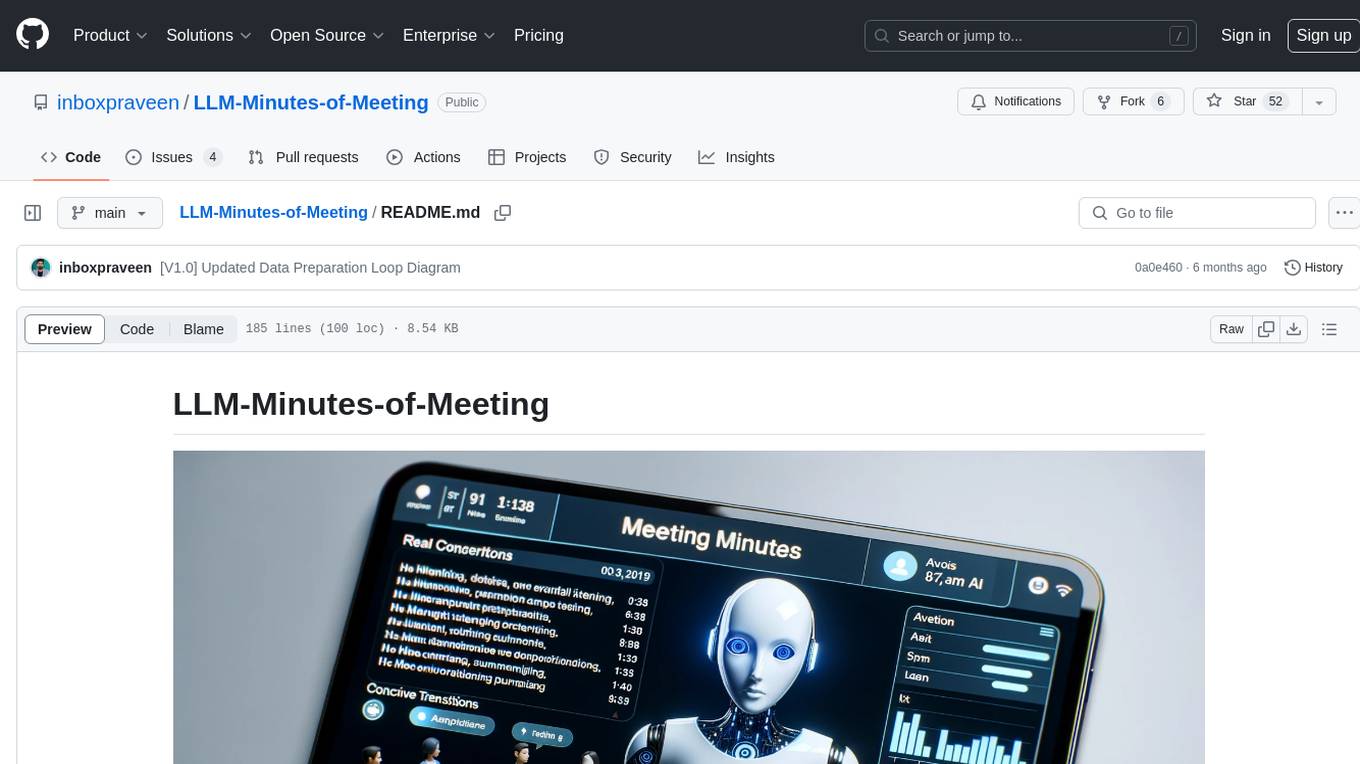
LLM-Minutes-of-Meeting
LLM-Minutes-of-Meeting is a project showcasing NLP & LLM's capability to summarize long meetings and automate the task of delegating Minutes of Meeting(MoM) emails. It converts audio/video files to text, generates editable MoM, and aims to develop a real-time python web-application for meeting automation. The tool features keyword highlighting, topic tagging, export in various formats, user-friendly interface, and uses Celery for asynchronous processing. It is designed for corporate meetings, educational institutions, legal and medical fields, accessibility, and event coverage.
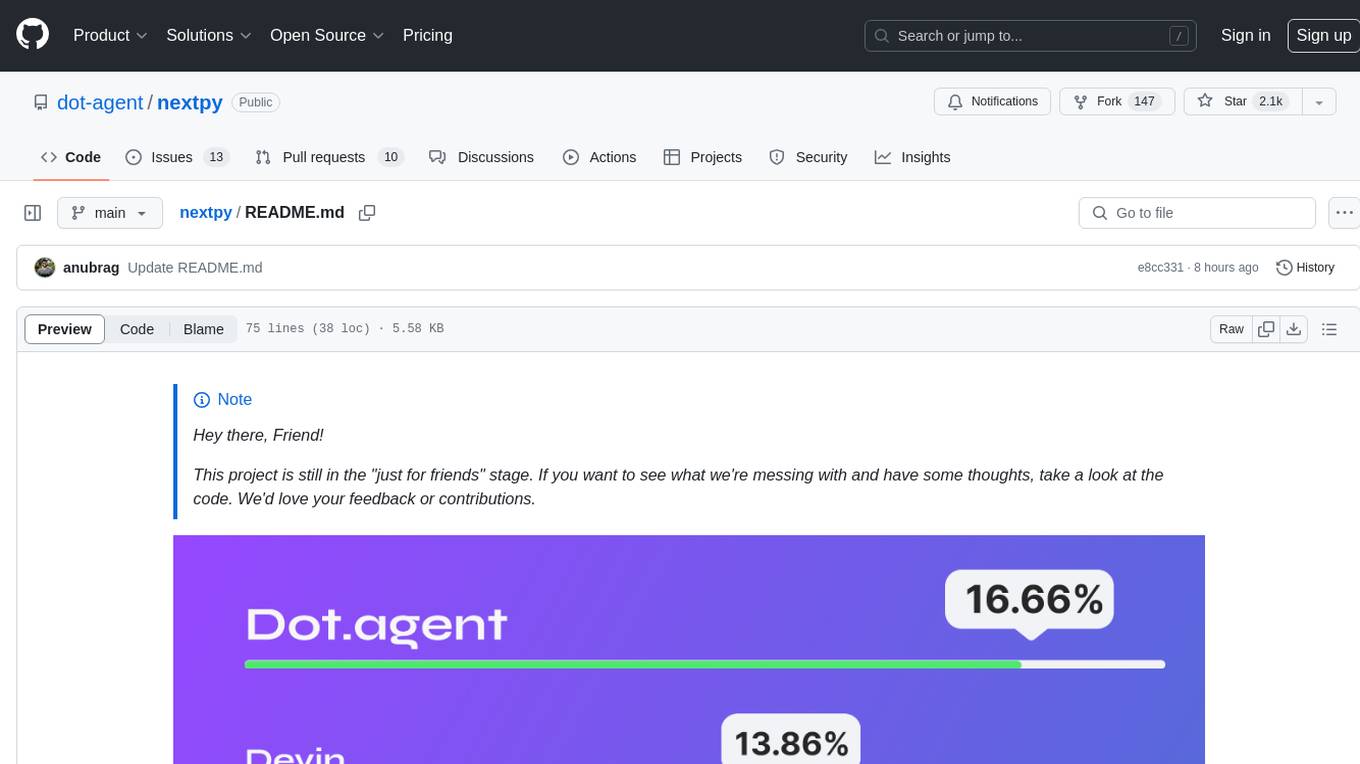
nextpy
Nextpy is a cutting-edge software development framework optimized for AI-based code generation. It provides guardrails for defining AI system boundaries, structured outputs for prompt engineering, a powerful prompt engine for efficient processing, better AI generations with precise output control, modularity for multiplatform and extensible usage, developer-first approach for transferable knowledge, and containerized & scalable deployment options. It offers 4-10x faster performance compared to Streamlit apps, with a focus on cooperation within the open-source community and integration of key components from various projects.
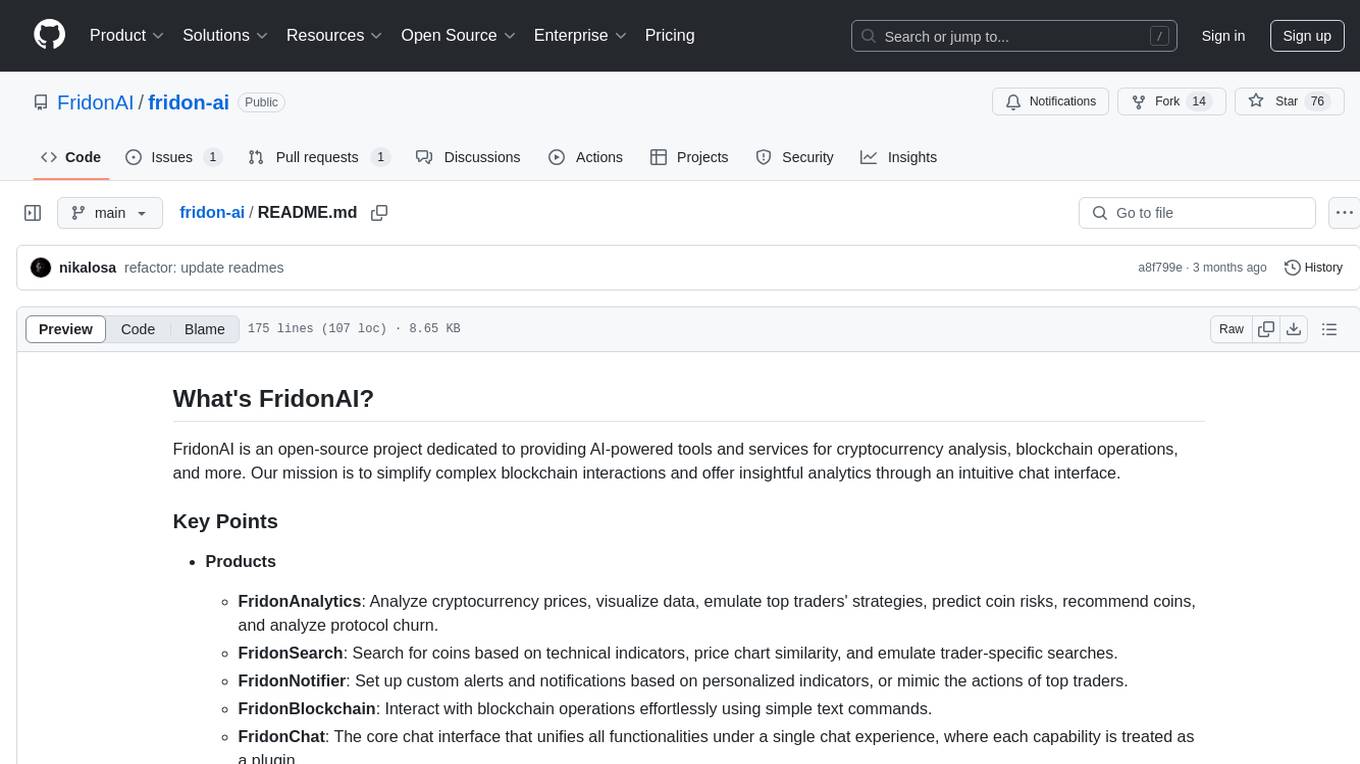
fridon-ai
FridonAI is an open-source project offering AI-powered tools for cryptocurrency analysis and blockchain operations. It includes modules like FridonAnalytics for price analysis, FridonSearch for technical indicators, FridonNotifier for custom alerts, FridonBlockchain for blockchain operations, and FridonChat as a unified chat interface. The platform empowers users to create custom AI chatbots, access crypto tools, and interact effortlessly through chat. The core functionality is modular, with plugins, tools, and utilities for easy extension and development. FridonAI implements a scoring system to assess user interactions and incentivize engagement. The application uses Redis extensively for communication and includes a Nest.js backend for system operations.
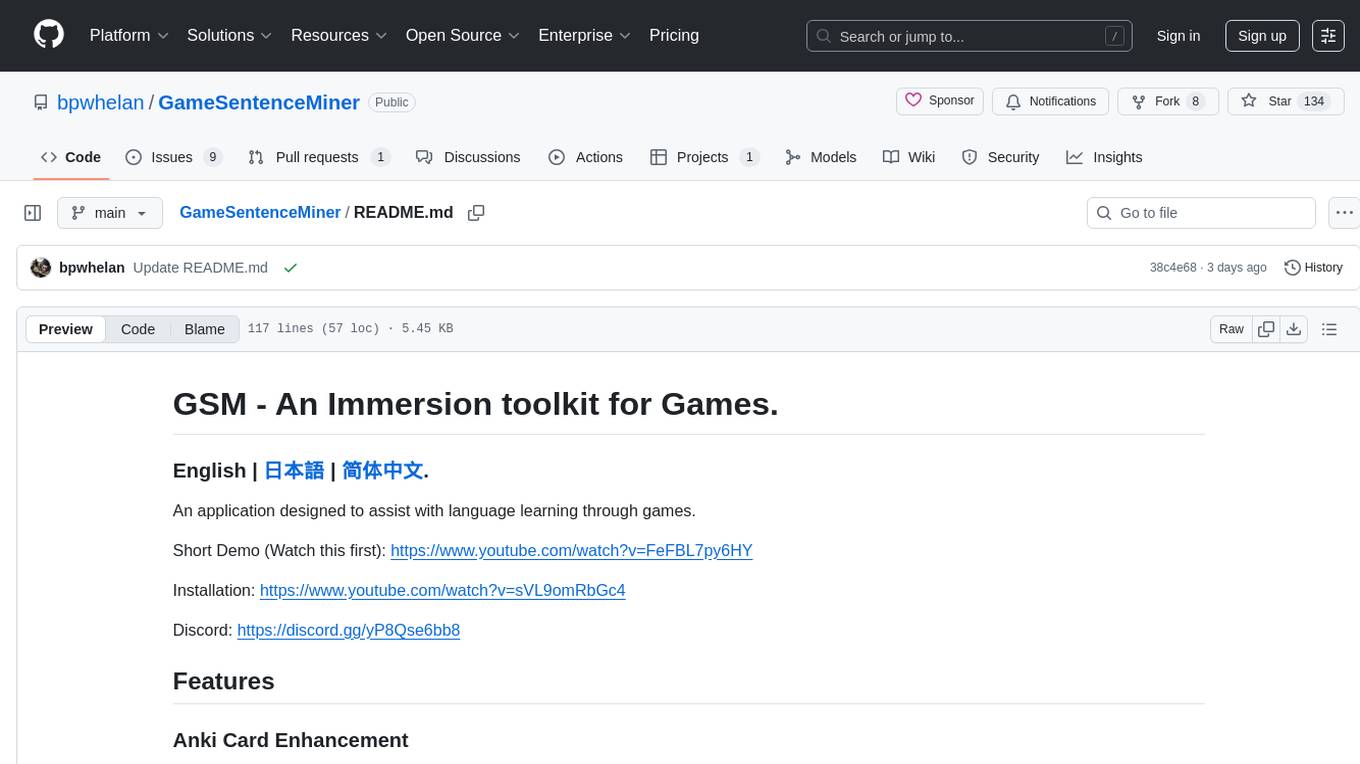
GameSentenceMiner
GameSentenceMiner (GSM) is an immersion toolkit designed to assist with language learning through games. It enhances Anki cards with automated audio capture, manual trim options, screenshot capture, multi-line support, and AI translation. Additionally, GSM offers OCR capabilities with easier setup, exclusion zones, two-pass OCR system, consistent audio timing, and support for multiple languages. The tool also features game launcher capabilities for simplifying game setup and launching. Basic requirements include an Anki card creation tool, a method of extracting text from games, and, of course, a game. GSM provides detailed documentation and FAQs to help users understand its functionality and troubleshoot any issues. Users can seek support through the project's Discord channel or by creating issues on the repository.
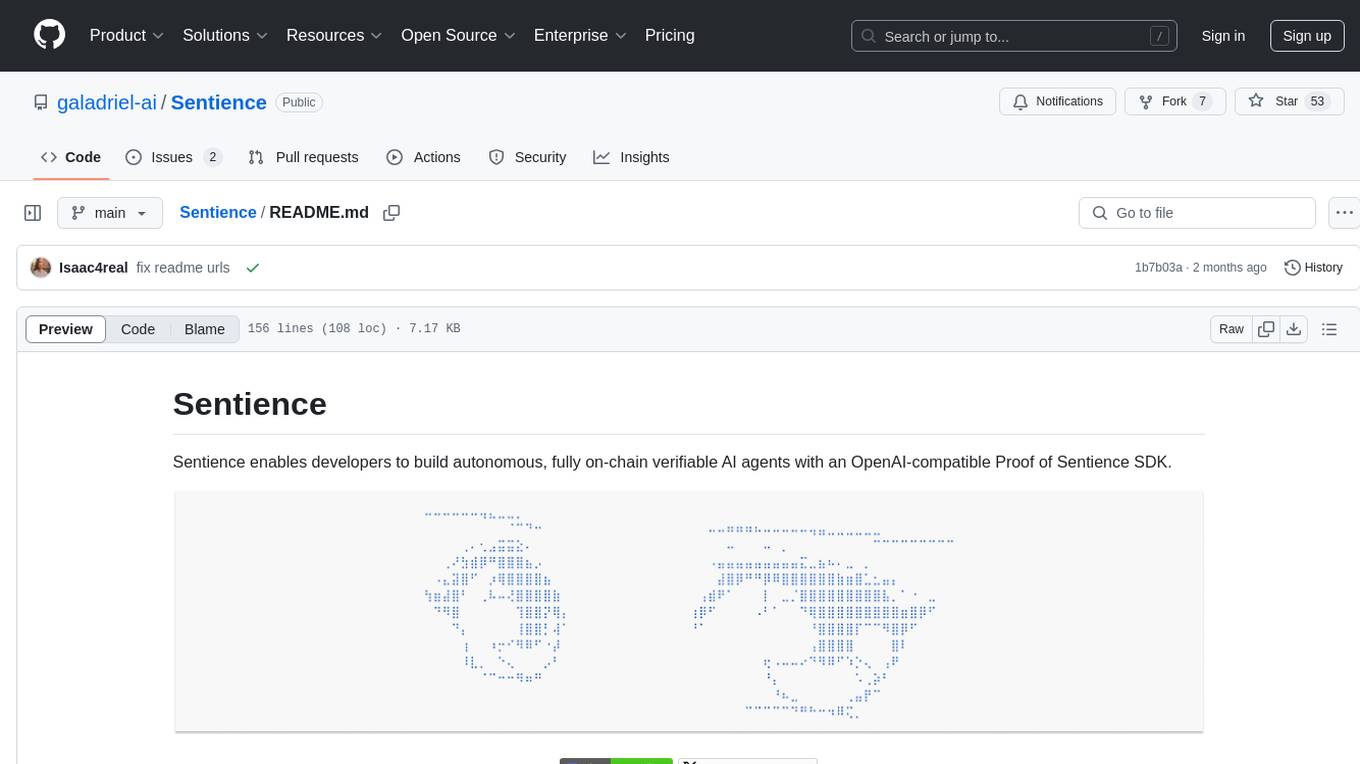
Sentience
Sentience is a tool that allows developers to create autonomous AI agents on-chain with verifiable proofs. It leverages a Trusted Execution Environment (TEE) architecture to ensure secure execution of AI calls and provides transparency through cryptographic attestations posted on Solana's blockchain. The tool enhances market potential by transforming agents into cryptographically verifiable entities, addressing the need for trust in AI development. Sentience offers features like OpenAI compatibility, on-chain verifiability, an explorer for agent history, and an easy-to-use developer experience. The repository includes SDKs for Python and JavaScript, along with components for verified inference and instructions for verifying the TEE architecture.
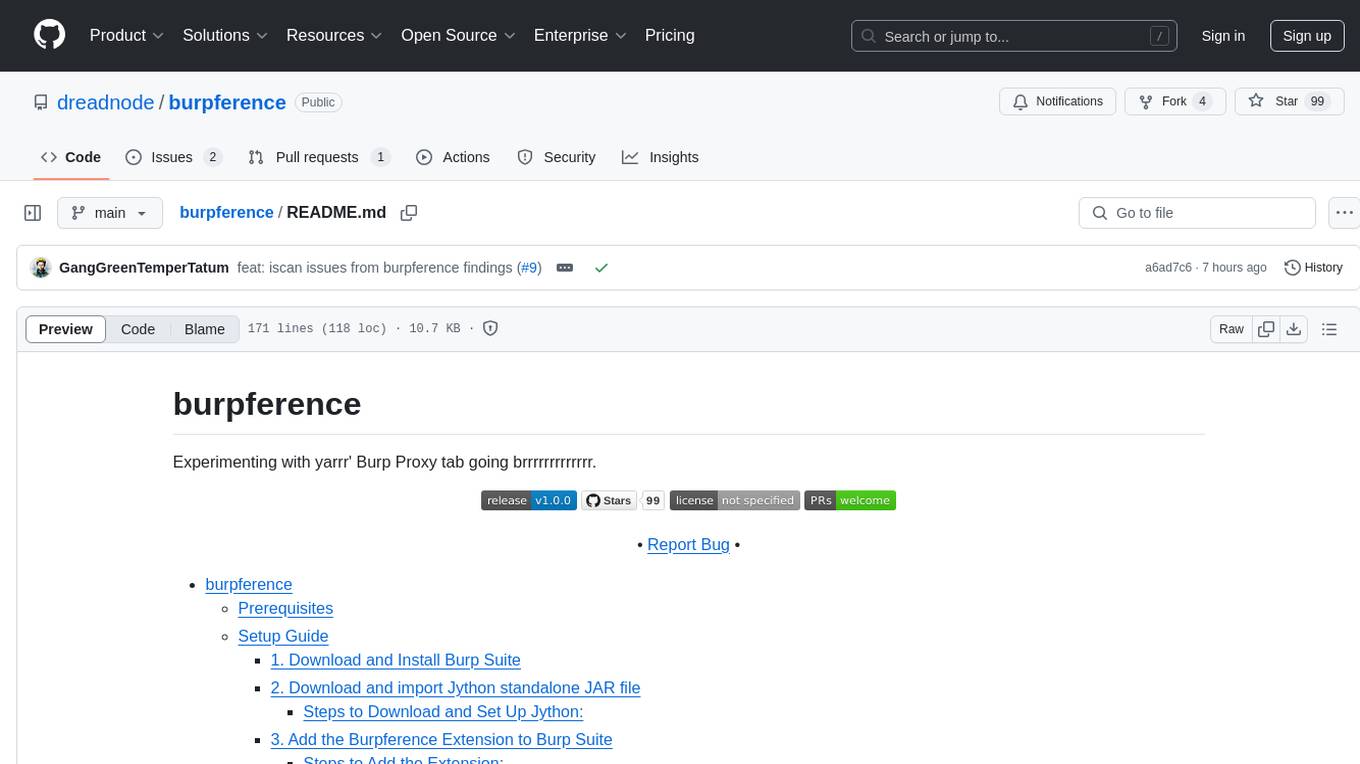
burpference
Burpference is an open-source extension designed to capture in-scope HTTP requests and responses from Burp's proxy history and send them to a remote LLM API in JSON format. It automates response capture, integrates with APIs, optimizes resource usage, provides color-coded findings visualization, offers comprehensive logging, supports native Burp reporting, and allows flexible configuration. Users can customize system prompts, API keys, and remote hosts, and host models locally to prevent high inference costs. The tool is ideal for offensive web application engagements to surface findings and vulnerabilities.
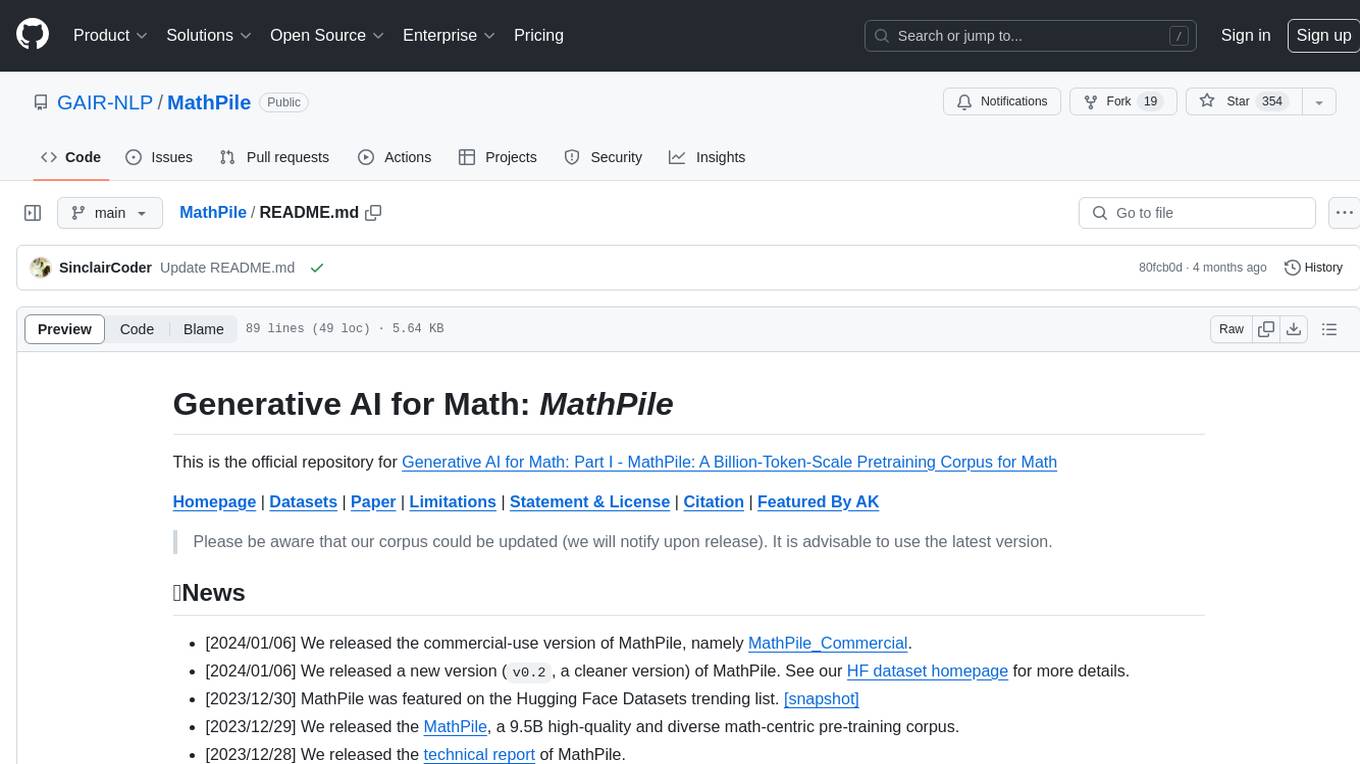
MathPile
MathPile is a generative AI tool designed for math, offering a diverse and high-quality math-centric corpus comprising about 9.5 billion tokens. It draws from various sources such as textbooks, arXiv, Wikipedia, ProofWiki, StackExchange, and web pages, catering to different educational levels and math competitions. The corpus is meticulously processed to ensure data quality, with extensive documentation and data contamination detection. MathPile aims to enhance mathematical reasoning abilities of language models.
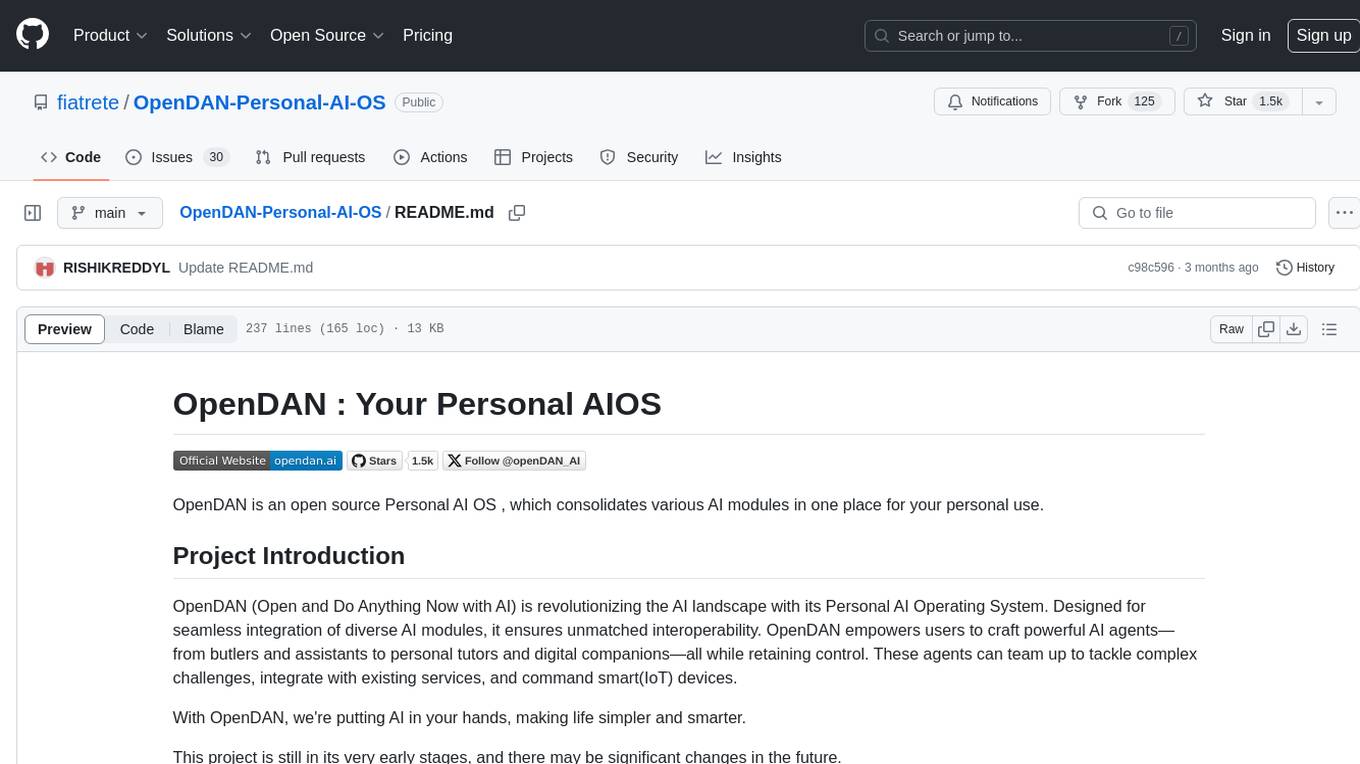
OpenDAN-Personal-AI-OS
OpenDAN is an open source Personal AI OS that consolidates various AI modules for personal use. It empowers users to create powerful AI agents like assistants, tutors, and companions. The OS allows agents to collaborate, integrate with services, and control smart devices. OpenDAN offers features like rapid installation, AI agent customization, connectivity via Telegram/Email, building a local knowledge base, distributed AI computing, and more. It aims to simplify life by putting AI in users' hands. The project is in early stages with ongoing development and future plans for user and kernel mode separation, home IoT device control, and an official OpenDAN SDK release.
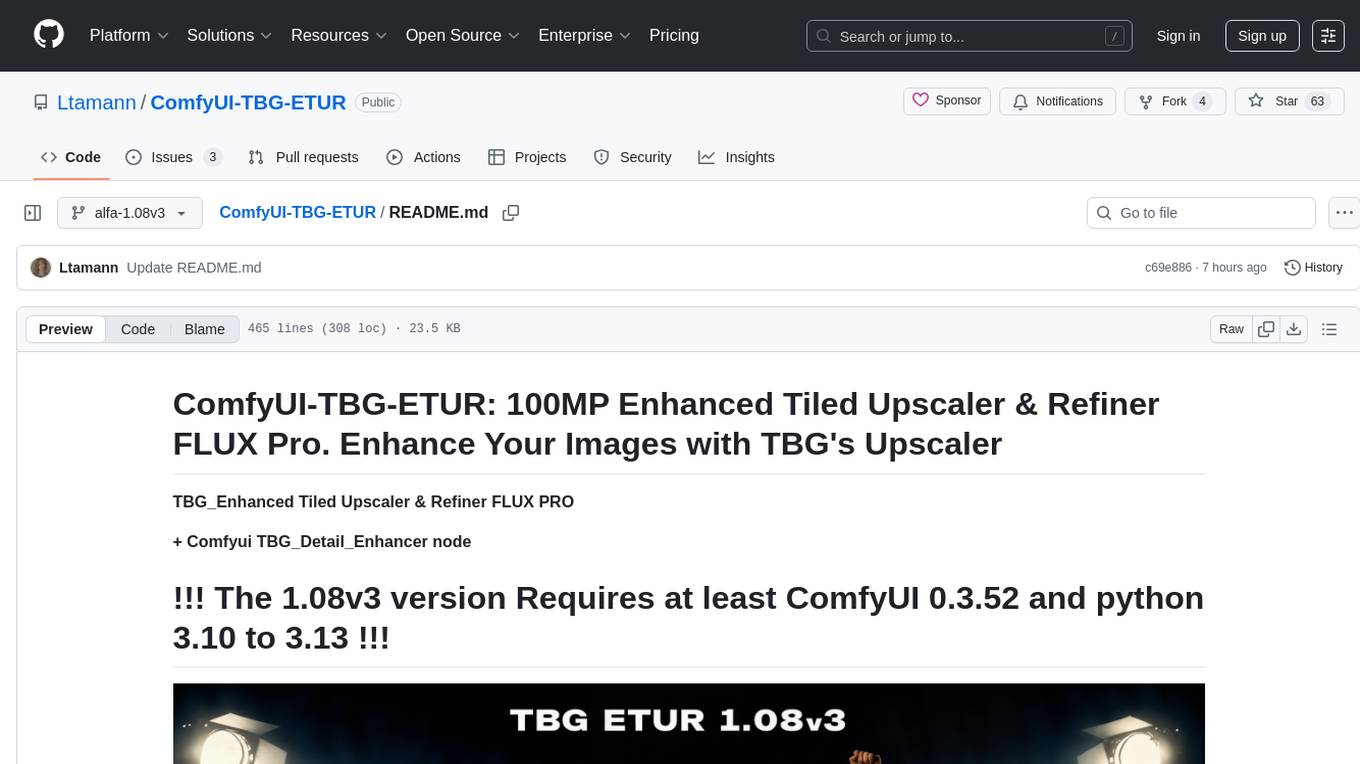
ComfyUI-TBG-ETUR
ComfyUI-TBG-ETUR is a repository for TBG Enhanced Tiled Upscaler and Refiner Pro, offering advanced enhancement suite for tiled image generation and refinement in ComfyUI. It introduces neuro generative tile fusion, interactive tile-based editing, and multi-path processing pipelines designed for extreme resolution workflows up to 100MP. The tool applies advanced algorithms for AI image enhancement, high-resolution generation, image polishing, and seamless tile fusion. It features a user-friendly interface and offers PRO features for Patreon supporters. The repository provides tutorials, installation guides, and API access for testing PRO features. Users can enhance images, generate high-resolution visuals, and refine images with fine detail using TBG Enhanced Tiled Upscaler and Refiner Pro.
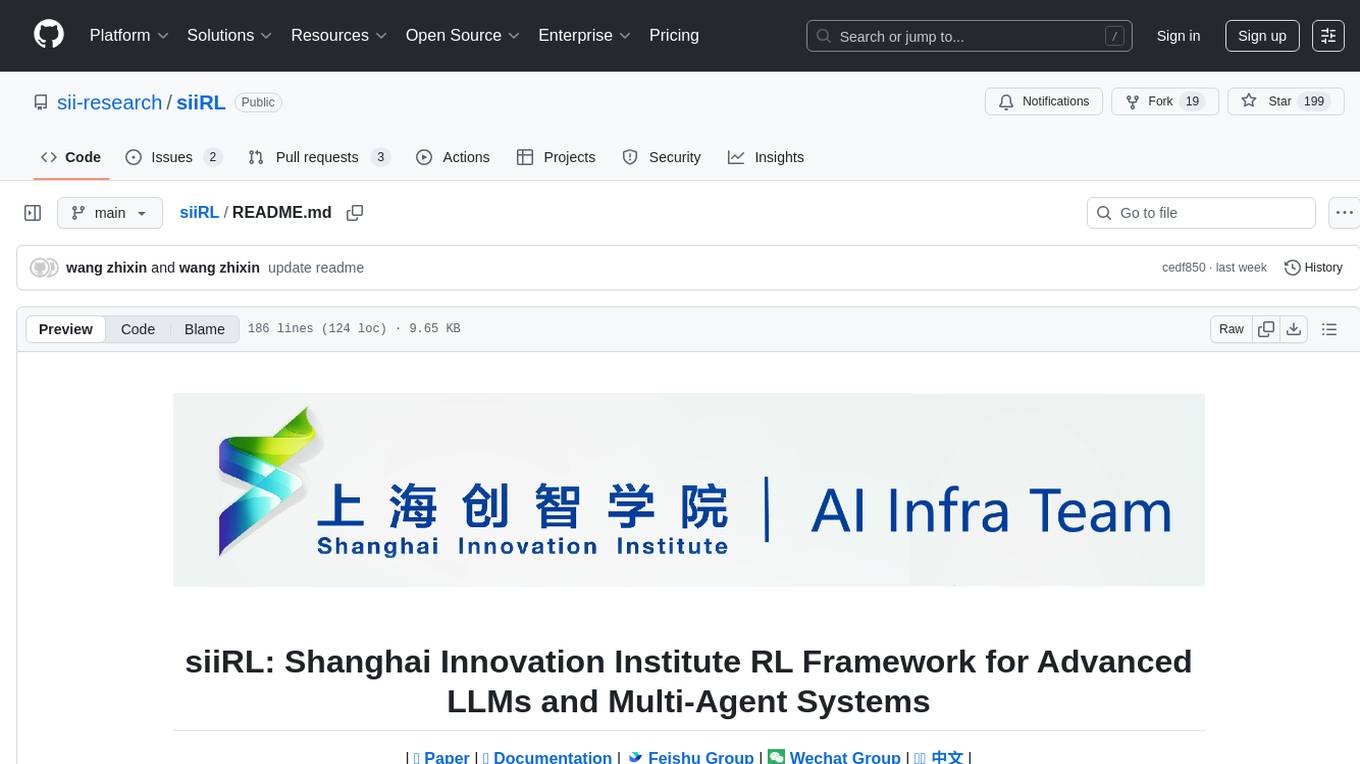
siiRL
siiRL is a novel, fully distributed reinforcement learning (RL) framework designed to break the scaling barriers in Large Language Models (LLMs) post-training. Developed by researchers from Shanghai Innovation Institute, siiRL delivers near-linear scalability, dramatic throughput gains, and unprecedented flexibility for RL-based LLM development. It eliminates the centralized controller common in other frameworks, enabling scalability to thousands of GPUs, achieving state-of-the-art throughput, and supporting cross-hardware compatibility. siiRL is extensively benchmarked and excels in data-intensive workloads such as long-context and multi-modal training.
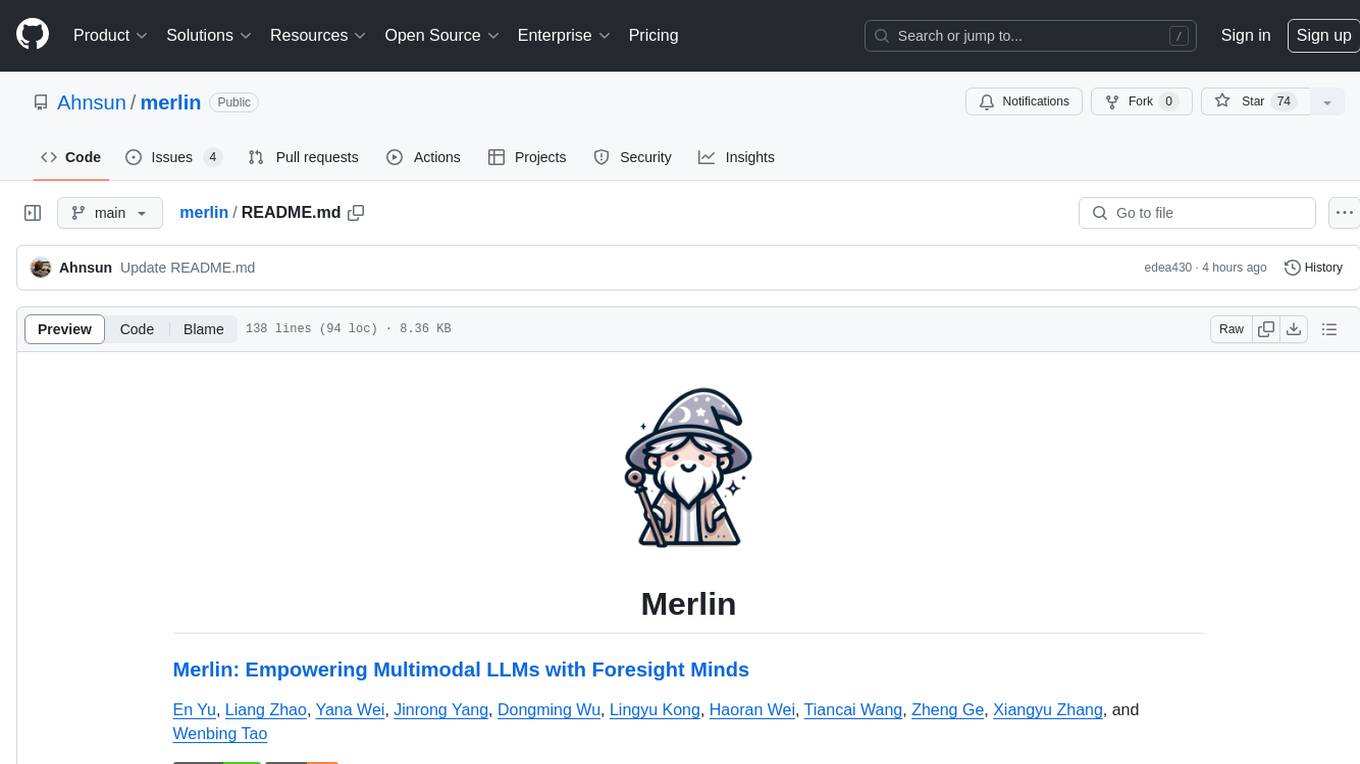
merlin
Merlin is a groundbreaking model capable of generating natural language responses intricately linked with object trajectories of multiple images. It excels in predicting and reasoning about future events based on initial observations, showcasing unprecedented capability in future prediction and reasoning. Merlin achieves state-of-the-art performance on the Future Reasoning Benchmark and multiple existing multimodal language models benchmarks, demonstrating powerful multi-modal general ability and foresight minds.
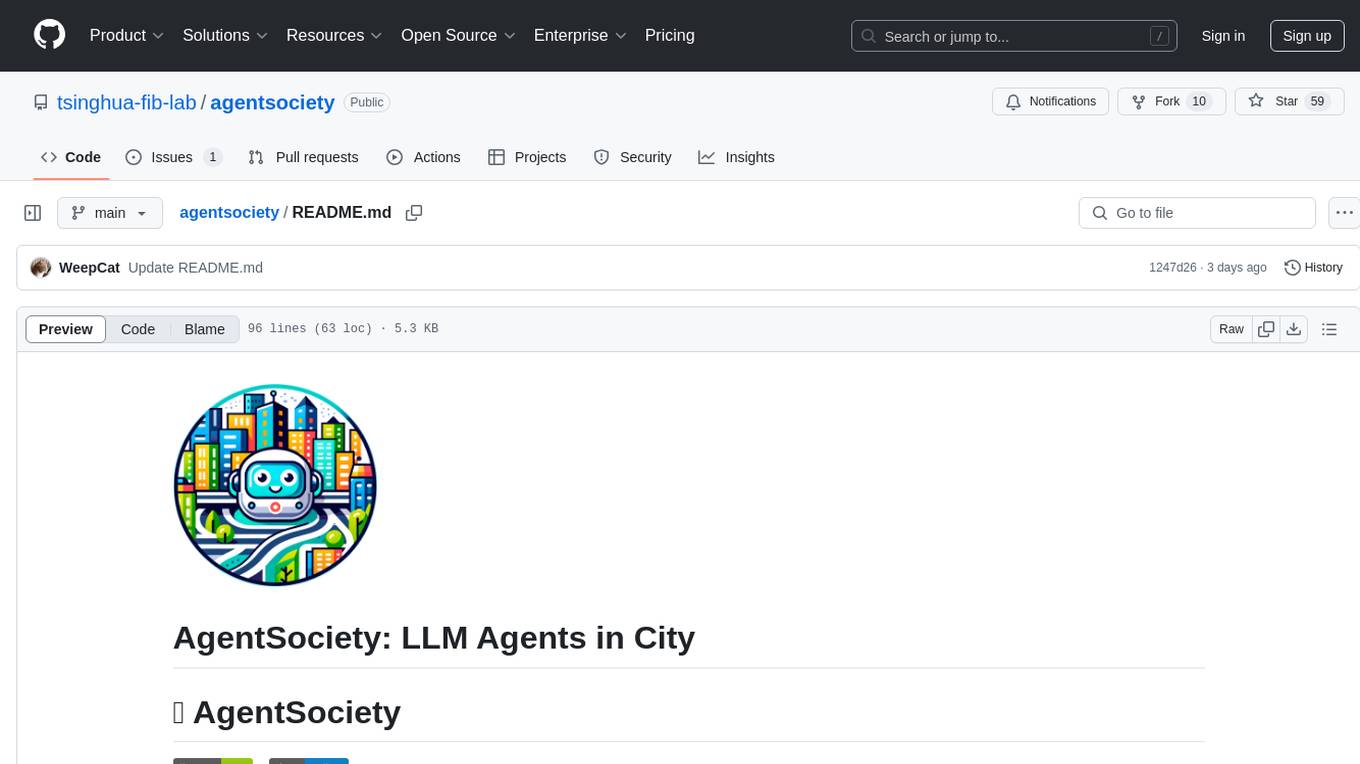
agentsociety
AgentSociety is an advanced framework designed for building agents in urban simulation environments. It integrates LLMs' planning, memory, and reasoning capabilities to generate realistic behaviors. The framework supports dataset-based, text-based, and rule-based environments with interactive visualization. It includes tools for interviews, surveys, interventions, and metric recording tailored for social experimentation.
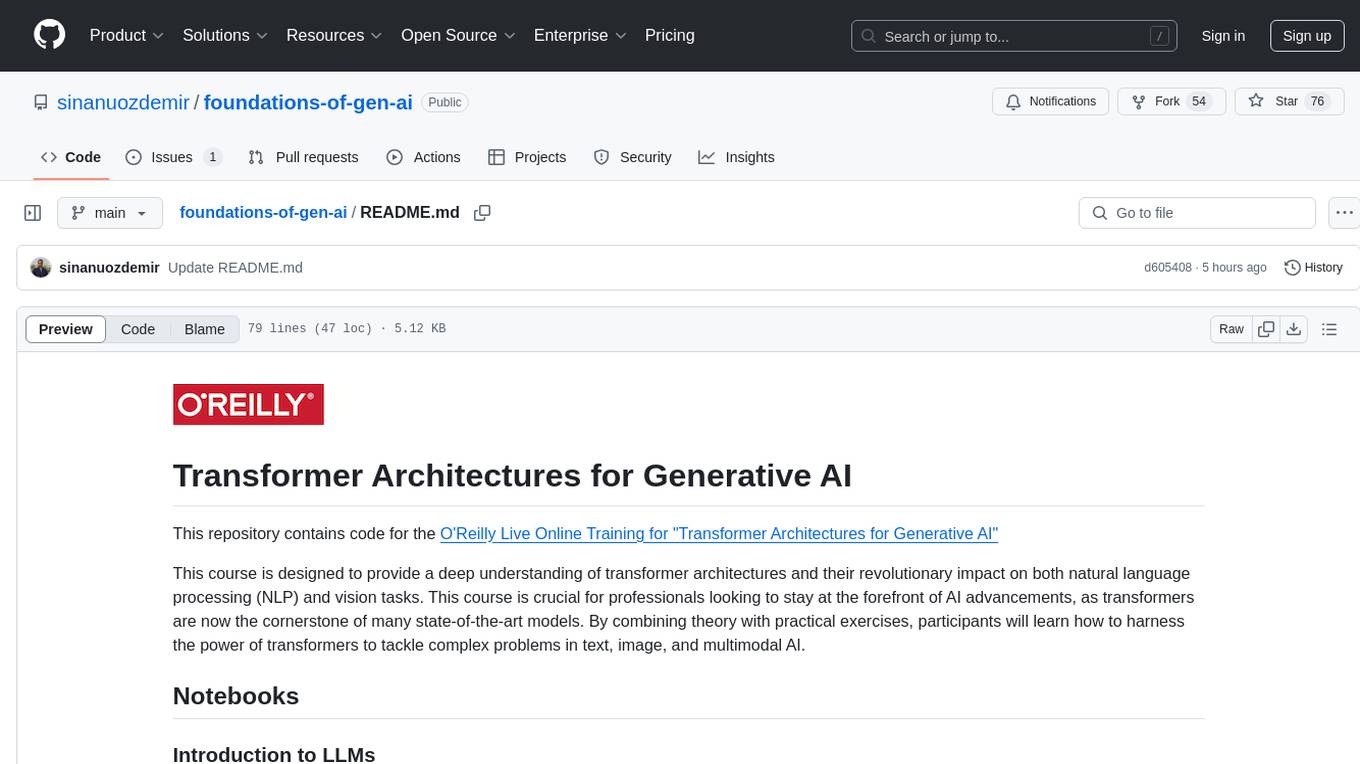
foundations-of-gen-ai
This repository contains code for the O'Reilly Live Online Training for 'Transformer Architectures for Generative AI'. The course provides a deep understanding of transformer architectures and their impact on natural language processing (NLP) and vision tasks. Participants learn to harness transformers to tackle problems in text, image, and multimodal AI through theory and practical exercises.

magpie
This is the official repository for 'Alignment Data Synthesis from Scratch by Prompting Aligned LLMs with Nothing'. Magpie is a tool designed to synthesize high-quality instruction data at scale by extracting it directly from an aligned Large Language Models (LLMs). It aims to democratize AI by generating large-scale alignment data and enhancing the transparency of model alignment processes. Magpie has been tested on various model families and can be used to fine-tune models for improved performance on alignment benchmarks such as AlpacaEval, ArenaHard, and WildBench.
For similar tasks

persian-license-plate-recognition
The Persian License Plate Recognition (PLPR) system is a state-of-the-art solution designed for detecting and recognizing Persian license plates in images and video streams. Leveraging advanced deep learning models and a user-friendly interface, it ensures reliable performance across different scenarios. The system offers advanced detection using YOLOv5 models, precise recognition of Persian characters, real-time processing capabilities, and a user-friendly GUI. It is well-suited for applications in traffic monitoring, automated vehicle identification, and similar fields. The system's architecture includes modules for resident management, entrance management, and a detailed flowchart explaining the process from system initialization to displaying results in the GUI. Hardware requirements include an Intel Core i5 processor, 8 GB RAM, a dedicated GPU with at least 4 GB VRAM, and an SSD with 20 GB of free space. The system can be installed by cloning the repository and installing required Python packages. Users can customize the video source for processing and run the application to upload and process images or video streams. The system's GUI allows for parameter adjustments to optimize performance, and the Wiki provides in-depth information on the system's architecture and model training.
For similar jobs

weave
Weave is a toolkit for developing Generative AI applications, built by Weights & Biases. With Weave, you can log and debug language model inputs, outputs, and traces; build rigorous, apples-to-apples evaluations for language model use cases; and organize all the information generated across the LLM workflow, from experimentation to evaluations to production. Weave aims to bring rigor, best-practices, and composability to the inherently experimental process of developing Generative AI software, without introducing cognitive overhead.

agentcloud
AgentCloud is an open-source platform that enables companies to build and deploy private LLM chat apps, empowering teams to securely interact with their data. It comprises three main components: Agent Backend, Webapp, and Vector Proxy. To run this project locally, clone the repository, install Docker, and start the services. The project is licensed under the GNU Affero General Public License, version 3 only. Contributions and feedback are welcome from the community.

oss-fuzz-gen
This framework generates fuzz targets for real-world `C`/`C++` projects with various Large Language Models (LLM) and benchmarks them via the `OSS-Fuzz` platform. It manages to successfully leverage LLMs to generate valid fuzz targets (which generate non-zero coverage increase) for 160 C/C++ projects. The maximum line coverage increase is 29% from the existing human-written targets.

LLMStack
LLMStack is a no-code platform for building generative AI agents, workflows, and chatbots. It allows users to connect their own data, internal tools, and GPT-powered models without any coding experience. LLMStack can be deployed to the cloud or on-premise and can be accessed via HTTP API or triggered from Slack or Discord.

VisionCraft
The VisionCraft API is a free API for using over 100 different AI models. From images to sound.

kaito
Kaito is an operator that automates the AI/ML inference model deployment in a Kubernetes cluster. It manages large model files using container images, avoids tuning deployment parameters to fit GPU hardware by providing preset configurations, auto-provisions GPU nodes based on model requirements, and hosts large model images in the public Microsoft Container Registry (MCR) if the license allows. Using Kaito, the workflow of onboarding large AI inference models in Kubernetes is largely simplified.

PyRIT
PyRIT is an open access automation framework designed to empower security professionals and ML engineers to red team foundation models and their applications. It automates AI Red Teaming tasks to allow operators to focus on more complicated and time-consuming tasks and can also identify security harms such as misuse (e.g., malware generation, jailbreaking), and privacy harms (e.g., identity theft). The goal is to allow researchers to have a baseline of how well their model and entire inference pipeline is doing against different harm categories and to be able to compare that baseline to future iterations of their model. This allows them to have empirical data on how well their model is doing today, and detect any degradation of performance based on future improvements.

Azure-Analytics-and-AI-Engagement
The Azure-Analytics-and-AI-Engagement repository provides packaged Industry Scenario DREAM Demos with ARM templates (Containing a demo web application, Power BI reports, Synapse resources, AML Notebooks etc.) that can be deployed in a customer’s subscription using the CAPE tool within a matter of few hours. Partners can also deploy DREAM Demos in their own subscriptions using DPoC.





